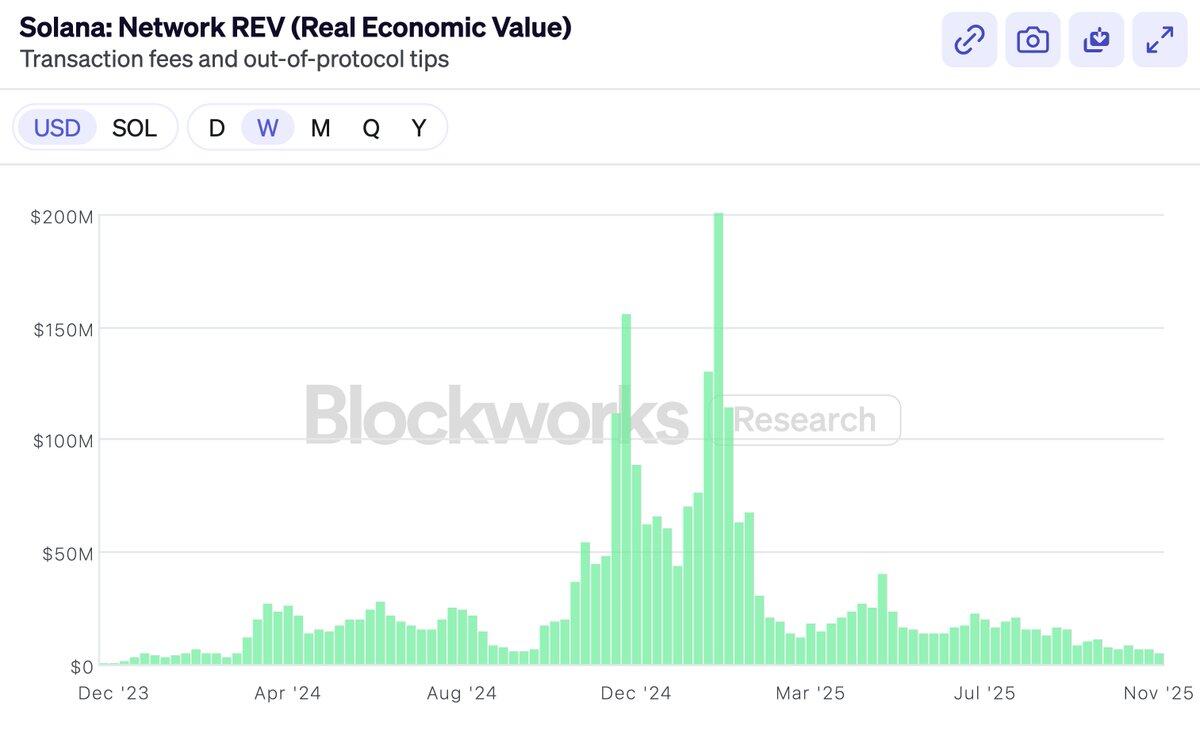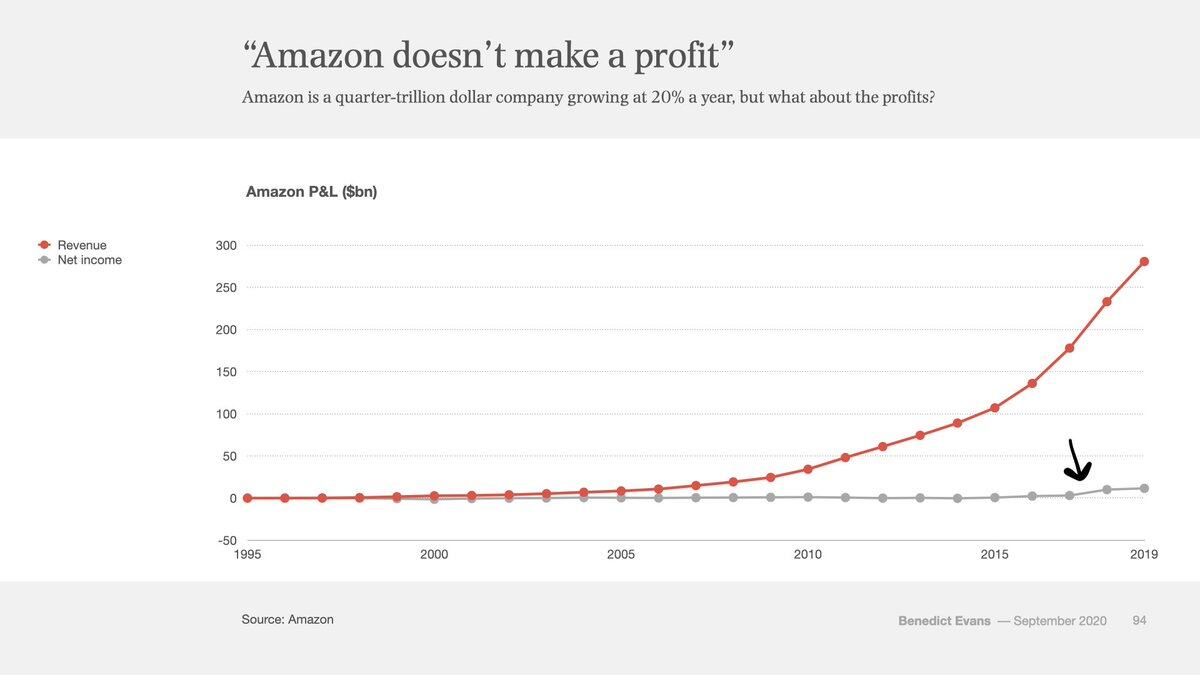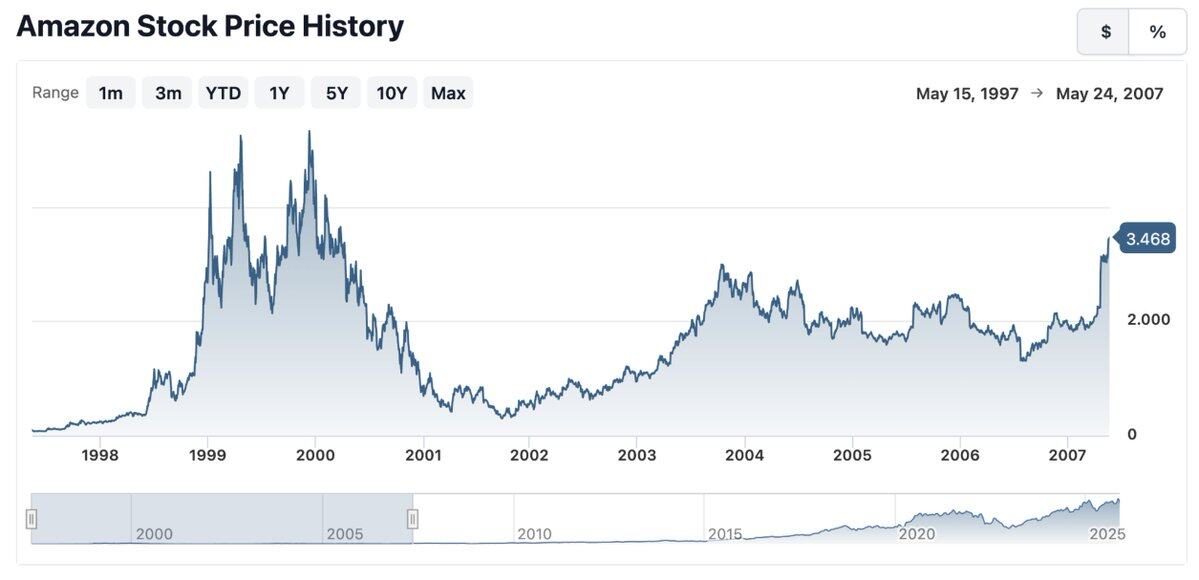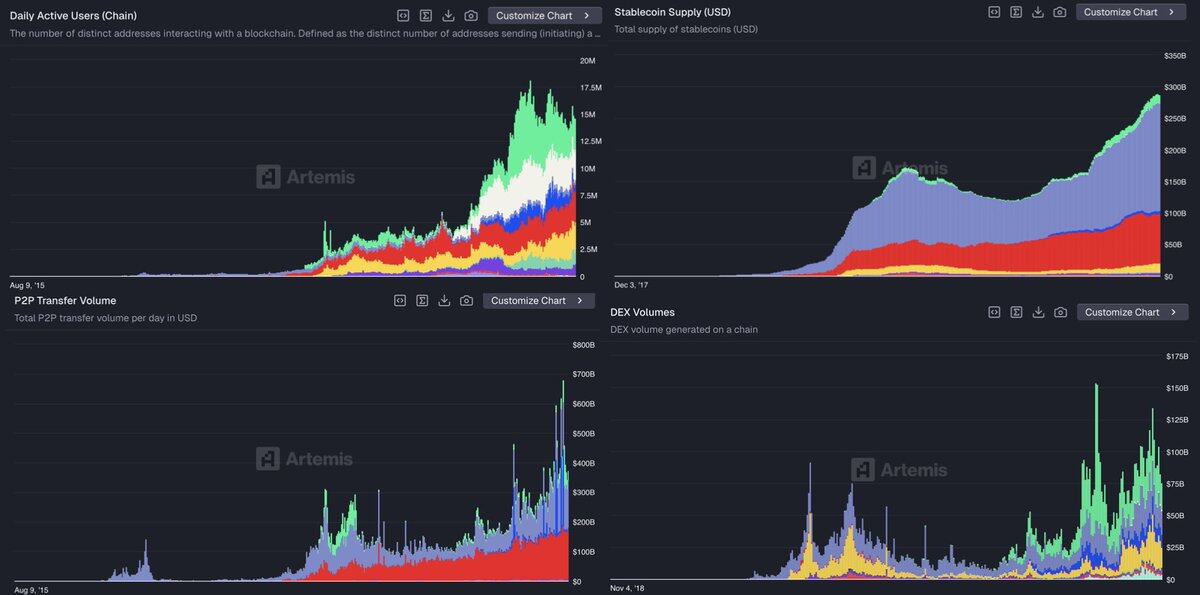A heartfelt post from a Dragonfly partner: Reject cynicism, embrace exponential thinking.
This article is from: Haseeb Qureshi, Managing Partner of Dragonfly
Compiled by Odaily Planet Daily ( @OdailyChina ); Translated by Azuma ( @azuma_eth )
Editor's Note: The industry is currently experiencing a low point in its confidence regarding the future. Is the bubble too big? Are valuations too high? Do the things I hold in my hands have any value? These kinds of questions are constantly testing market confidence.
On November 28th, Haseeb Qureshi, a well-known bald-headed partner at Dragonfly, wrote a lengthy and insightful article. In it, Haseeb summarized the prevailing sentiment in the community as "financial cynicism" (i.e., a fundamental skepticism or even distrust of the financial system, market participants, asset prices, and policy motivations). He also pointed out that the industry's focus is shifting from Silicon Valley to Wall Street, reflecting an overemphasis on linear thinking and a neglect of exponential thinking. Haseeb believes that ETH or SOL should not be mechanically valued using price-to-earnings ratios and asserts that exponential growth will ultimately drive cryptocurrencies to "devour everything."
The following is the original text by Haseeb, translated by Odaily.

I used to tell entrepreneurs that when you launch a new product, the market's reaction won't be hatred, but indifference. Generally, nobody will care about your new blockchain.
But I can't say that anymore. Monad just launched this week, and I've never seen a newly launched blockchain encounter so much hatred. I've been a professional investor in the cryptocurrency space for over seven years, and before 2023, almost every new chain that launched either received a huge market response or was completely ignored.
But now, new blockchains are often met with a lot of criticism from the outset. Projects like Monad, Tempo, and MegaETH—even before their mainnet launch—were frequently hacked, which is a truly novel phenomenon.
I've been trying to analyze why this situation is occurring now, and what kind of market psychology it reflects.
Medicine is more deadly than disease.
A heads-up: this might be the most "vague" blockchain valuation article you've ever read. I don't have any fancy metrics or charts to show you. Instead, I'll be refuting the current mainstream sentiment in cryptocurrency, a sentiment I've almost consistently opposed for the past few years.
In 2024, I felt I was fighting against financial nihilism. Financial nihilism posits that all assets are meaningless, ultimately just memes, and that everything we build is essentially worthless. Fortunately, this atmosphere no longer dominates the market. We have emerged from this misconception.
But the prevailing sentiment right now, I'd call it "financial cynicism." Many people are thinking that maybe these tokens do have some value, and aren't just memes, but they're severely overvalued, with their actual value possibly only one-fifth to one-tenth of their current trading price... and Wall Street will find out sooner or later, so you'd better pray that Wall Street doesn't expose our bluff, otherwise, once they do, everything will be over.
You'll see many bullish analysts now trying to construct optimistic Layer 1 valuation models, pushing up P/E ratios, gross margins, and DCF to try and counter this market sentiment.
At the end of last year, Solana proudly adopted REV (Real Economic Value) as a metric that could finally justify its valuation. They proudly declared: We, and only we, no longer need to bluff our way through Wall Street!
Of course, its value plummeted almost immediately after REV was officially adopted—but interestingly, SOL performed better than REV itself.

I'm not saying there's anything wrong with REV. REV is a very smart indicator. But the focus of this article isn't on indicator selection.
Then Hyperliquid officially launched. It's a decentralized exchange with real revenue, a buyback mechanism, and a price-to-earnings ratio. The community then exclaimed, "See? I told you! Finally, for the first time, we have a token with real profits that can be measured by a price-to-earnings ratio. Hyperliquid will devour everything because Ethereum and Solana obviously don't make any real money, and we can stop pretending they have value!"
Hyperliquid, Pump, and Sky—these tokens that emphasize buybacks are indeed great, but the market has always offered opportunities to invest in exchange-traded stocks or tokens. You can always buy assets like COIN and BNB. We also hold HYPE, and I also think it's an excellent product.
But that's not why people invested in ETH and SOL in the first place. Layer 1 doesn't offer the profit margins of exchanges, which isn't a reason for people to hold them—if people wanted that kind of profit model, they could have just bought COIN.
So if I weren't criticizing the financial metrics of blockchain, you might think this article was condemning the various crimes of the "token industry complex."
Clearly, everyone has lost money on tokens over the past year—including venture capitalists. Altcoins have performed terribly this year. So, the other half of the current community sentiment is debating who to blame: Who got greedy? Were the VCs greedy? Was Wintermute greedy? Was Binance greedy? Were the miners greedy? Were the founders greedy?
Of course, the answer remains the same. Everyone is greedy—VCs, Windtermute, miners, Binance, KOLs—they're all greedy, and so are you. But that doesn't matter. Because any properly functioning market never requires participants to act against their own interests. If our assessment of cryptocurrencies is correct, then despite everyone's greed, investments can still yield returns. Trying to interpret market downturns by analyzing "who's greedier" is akin to organizing a witch trial—I guarantee people don't just become greedy at the last minute.
Therefore, this is not the topic of this article.
Many people want me to write articles analyzing the potential value of MON and MEGA. I have absolutely no interest in these kinds of articles, nor do I intend to persuade you to buy any specific asset. In fact, if you don't have a positive outlook on these projects, you probably shouldn't buy any tokens at all.
Will a new challenger blockchain emerge victorious? Who knows? But if a significant chance of success exists, the market will price it based on that probability. If Ethereum is worth $300 billion and Solana is worth $80 billion, then a project with a 1% - 5% chance of becoming the next Ethereum or Solana will be valued according to that probability.
The community's overreaction is no different from the valuation logic of biotech companies. A drug with less than a 10% chance of curing Alzheimer's disease will still be valued at billions of dollars—even if there's a 90% chance it won't pass Phase III clinical trials and will go bankrupt. This is the logic of probability calculation—and the market is adept at it. Assets with binary outcomes are priced according to probability, not by business revenue, and certainly not by ethical standards. This is the valuation philosophy of the "shut up and calculate" school.
Honestly, I don't think this is an interesting topic worth writing about—arguing whether the odds are 5% or 10% is meaningless. The market itself is the best judge of the valuation of any token, not an article's analysis.
So what I'm going to write next is: the crypto community seems to have lost faith in the value of public blockchains.
I don't think it's because they don't believe new chains can win market share. After all, we just saw Solana rise from the ashes less than two years ago and quickly gain market share. It's not easy, but it's certainly possible.
The problem is more about the perception that even if a new chain wins, there's no "prize" worth winning. If ETH is just a meme, if it will never generate real revenue, then even if you win, you won't be worth $300 billion. The competition itself isn't worth participating in because these valuations are fake and will collapse before you even "claim your prize."
Being optimistic about public blockchain valuations is outdated. It's not that no one is optimistic—there are definitely optimists in the market. Where there are sellers, there are buyers. Although many people like to be pessimistic about Layer 1, there are still many people who are very willing to buy SOL at $140 and ETH at $3,000.
But there seems to be a widespread "awareness" now—that the smartest people have stopped buying tokens on smart contract blockchains . Smart people know the game is about to end, if not now, then soon. Now, only "newbies" are left buying these things—Uber drivers, Tom Lee, and KOLs touting trillion-dollar market capitalizations, and perhaps the US Treasury, but definitely not "smart money."
That's all nonsense. I don't believe it, and you shouldn't believe it either.
Therefore, I felt compelled to write a "manifesto for the smart" to explain why general-purpose public blockchains have value. This article is not about Monad or MegaETH; it is actually defending ETH and SOL , because if you believe ETH and SOL have value, then everything else follows the same logic.
As a VC, defending the valuations of ETH and SOL is not usually my job, but QTMD, if no one else is willing to do it, then I will write it.
The growth of the feeling index
My partner, Feng Bo, as a VC, personally witnessed the explosive growth of the Chinese internet. I've heard the saying "cryptocurrency is like the internet" so many times that it almost no longer moves me. But when I hear him tell that story, it always reminds me how costly it is to make the wrong judgment in such matters.
One story he often tells is that in the early 2000s, all the early e-commerce VCs (at the time a very small circle) got together for coffee and debated a question: how big can the e-commerce market really be?
Will it primarily be used in electronics (perhaps only tech geeks use computers)? Can it be suitable for women (perhaps they rely too much on touch)? Can it work in the food industry (is perishable goods difficult to manage)? These are all very important questions for early-stage VCs when deciding what to invest in and how much to invest.
The answer, of course, is that they were all terribly wrong. E-commerce ultimately sells everything, and its target users are the entire world. But at the time, nobody truly believed this. Even if they did, they would never have dared to say it aloud.
You just need to wait long enough for exponential growth to tell you the answer. Even among believers, very few believed e-commerce would become so huge. And those few who truly believed almost all became billionaires because they "didn't sell." Other VCs (including Feng Bo himself) sold too early.
In the crypto space, believing in exponential growth has become outdated. But I believe in exponential growth in crypto. Because I've experienced it firsthand.
When I entered the crypto industry, nobody used these things. They were small, broken, and rubbish. On-chain TVL was only a few million. We invested in the first generation of DeFi—MakerDAO, Compound, 1inch—when they were still research projects. I remember when I was playing around on EtherDelta, a DEX trading millions of dollars a day was considered a huge success, but the experience was terrible. Now, we see billions of dollars in trading volume on-chain every day.
I remember thinking back then that Tether issuing $1 billion was "crazy," and The New York Times even wrote that it was a Ponzi scheme on the verge of collapse. Now, the issuance of stablecoins has exceeded $300 billion, and they are even subject to regulation by the Federal Reserve.
I believe in exponential growth because I've experienced it. I've witnessed it time and time again.
But you might argue—okay, maybe stablecoins grow exponentially, maybe DeFi grows exponentially, but that value isn't captured by ETH or SOL. The value doesn't flow to the chain itself.
My answer to that is: you still don't believe in exponential growth enough.
Because the answer to exponential growth remains the same: these things simply don't matter. The future scale will far exceed today's. When this field grows to an immense size, you will reap the rewards of economies of scale.
Please see the chart below.

This is Amazon's profit and loss statement from 1995 to 2019, a total of 24 years. Red represents revenue, and gray represents profit. See that little gray line at the end that curves upwards? That's when Amazon truly started making a profit 22 years after its founding.
It wasn't until Amazon reached its 22nd year that this gray line representing net income finally moved away from zero. Every year before that, people wrote columns, criticized, and shorted Amazon, saying it was a Ponzi scheme that would never make money.
Ethereum is just 10 years old, and here's a comparison of Amazon stock performance over its first 10 years.

A decade of stagnation. Along the way, Amazon was surrounded by skeptics and disbelievers—"Is e-commerce a VC-subsidized charity?"; "They're just selling cheap, low-quality gadgets to people who only like bargains, what future is there?"; "How can they possibly make real money like Walmart or GE?"
If you were fixated on arguing about Amazon's price-to-earnings ratio back then, you completely missed the point. That's a linear growth mindset, but e-commerce is never a linear trend—therefore, everyone who argued about P/E ratios over the past 22 years has been thoroughly refuted by reality. Regardless of your purchase price or entry point, your optimism was far from sufficient.
This is the nature of exponential growth. For truly exponential technologies, no matter how large you think they can grow, they will always exceed your expectations.
This is precisely the core understanding that Silicon Valley has always grasped better than Wall Street. Silicon Valley grew up in an environment of exponential growth, while Wall Street is steeped in linear thinking. And in the past few years, the center of gravity of the crypto industry has shifted from Silicon Valley to Wall Street. You can clearly feel this.
Admittedly, the growth of cryptocurrencies hasn't been as smooth as that of e-commerce. It's more volatile, fluctuating. This is because cryptocurrencies are related to "money," closely linked to macroeconomic forces, and subject to much stronger regulatory scrutiny than e-commerce. Cryptocurrencies directly target the core of a nation—its currency—thus placing far greater pressure on governments than e-commerce.
But exponential growth is still inevitable. This is a crude argument. But if cryptography is exponential, then this crude argument is correct.

Zoom out
Financial assets crave freedom, openness, and interconnectivity. Encryption technology transforms financial assets into a file format, making sending dollars or stocks as simple as sending a PDF. It enables the interconnection of everything—creating a 24/7, globally connected, and completely open financial network.
This will surely be a victory. Openness always wins.
If the internet taught me one thing, it's this: Giants may resist, governments may threaten and pressure, but ultimately they will all succumb to the speed of adoption, creativity, and efficiency this technology offers. This is what the internet did to all traditional industries. Blockchain will allow the same trend to engulf the entire financial and monetary system.
That's right—given enough time, they will all be swallowed up.
There's an old saying: People always overestimate what will happen in two years and underestimate what will happen in ten years.
If you believe in exponential growth, and if you take a long enough perspective, then all valuations are still undervalued. The key takeaway is this: every single day, holders outlast sellers and skeptics. Big capital has a much longer time horizon than short-term crypto traders can convincingly suggest. Historical experience teaches big capital not to fight major technological trends. Remember that grand narrative that initially lured you into buying ETH or SOL? Big capital still believes that story, and its conviction remains unwavering.
So what exactly am I arguing about?
I'm arguing that applying price-to-earnings ratios (the so-called "revenue valuation paradigm") to smart contract chains is a betrayal of exponential growth. This means you're categorizing the industry as linear growth; it means you believe that 30 million DAU and less than 1% M2 penetration on-chain are its ceiling; it means you think cryptocurrency is just a marginal product in the world, that it hasn't won, and isn't necessarily going to win.
More importantly, I am calling on everyone to become believers. Not just believers, but long-term believers.
I assert that this exponential transformation will surpass all the waves you've ever experienced in your lifetime. This is your "e-commerce era."
When you are old and gray, you will tell your descendants, "I was there when the upheaval happened." Not everyone believes this could come true—the entire social order will be reshaped, and all monetary and financial systems will be completely overturned by the decentralized computer programs we all share.
But it did happen, and it changed the world. And you were a part of it.
Disclosure of Interests: The above article represents only the author's personal views. Dragonfly is an investment firm for numerous tokens including MON, MEGA, ETH, SOL, HYPE, and SKY. Dragonfly firmly believes in the theory of exponential growth. This article does not constitute investment advice, but provides another perspective.
- 核心观点:加密货币将经历指数增长并重塑金融体系。
- 关键要素:
- 当前市场过度关注线性财务指标。
- 公链价值应基于指数增长潜力。
- 亚马逊22年不盈利但最终成功案例。
- 市场影响:推动行业回归技术创新本质。
- 时效性标注:长期影响



